Cannabis seed storage life extended through various methods including placing them in airtight containers with desiccants like silica gel for humidity control. Cool, dark locations such as refrigerators or freezers ensures longevity and maintains viability.
As the interest in home cultivation of cannabis continues to rise, one aspect that often gets overlooked is the proper storage of cannabis seeds.
While it might seem straightforward, the preservation of these seeds can be a complex process, requiring meticulous attention to factors such as temperature, humidity, and light exposure.
A nuanced understanding of these conditions is critical for maintaining the viability and potential to germinate the seeds over extended periods.
We’ll be exploring these factors in detail, providing an informed guide to ensuring the long-term success of your cannabis cultivation efforts.
Implementing optimal cannabis seed storage is important for both breeders, and growers purchasing from a seedbank.
Table of Contents
Key Takeaways
- Store cannabis seeds in a stable environment with humidity levels between 20-30% RH to prevent mold growth or desiccation.
- Protect seeds from light, especially UV rays, using opaque containers or UV protective coatings.
- Choose airtight containers made from materials like glass or metal to defend against light and air, ensuring genetic stability.
- Opt for storage locations that are dark, cool (below 10°C), and dry, like cupboards or drawers, to maintain seed quality and longevity.
- It’s important to store cannabis seeds correctly to stop cracking and splitting on the outer shell.
Understanding the Basics of Cannabis Seeds
Key determinants of a seed’s quality and potential for successful cultivation include the germination rate, genetic stability, shelf life, and physical appearance. The germination rate signifies the percentage chance of a seed developing into a sprout.
Genetic stability refers to the consistency of the seed in yielding plants with expected traits. Shelf life is representative of the optimal storage duration before the germinating potential starts to diminish.
Finally and as importantly the size and appearance of the seed can provide insights into its health and quality.
Understanding these factors and types of marijuana seeds is vital for successful cultivation, yielding a plant that aligns with expected growth, potency, and crop yield for the grower.
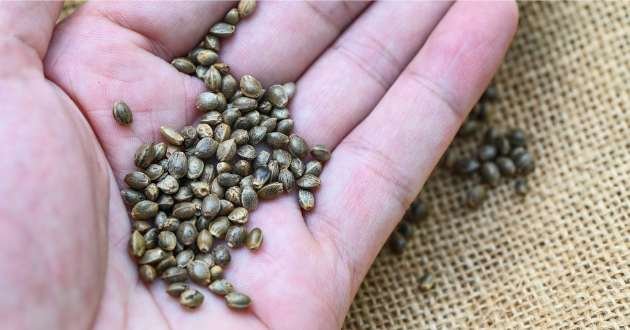
Cannabis seeds have distinct characteristics that can be identified by their appearance. Below, looks at the basics of cannabis seeds, covering their color, pattern, shape, size, surface texture, coating, and hardness.
Color
- Cannabis seeds exhibit a range of brown hues.
- The color spectrum includes light brown to dark brown.
- This variation in color is a natural trait of cannabis seeds.
Pattern
- A mottled pattern is characteristic of cannabis seeds.
- This pattern often features darker spots against the overall brown color.
- The unique patterning helps in distinguishing healthy seeds.
A healthy cannabis seed often has a dark coloration with a clear, visible pattern of darker spots or stripes. The presence of these patterns is a good sign that the seed is mature and has developed fully. In contrast, seeds that are green or pale might not be fully matured or could be of inferior quality.
- Genetic Indicator: The patterning can be an indicator of the seed’s genetic makeup, suggesting that it has inherited strong and viable traits from its parent plants.
- Maturity: The patterns are a sign of a seed’s maturity. Immature seeds lack the distinct patterns and coloration of mature seeds and are less likely to germinate successfully.
- Health and Viability: Seeds with clear, distinct patterns are generally healthier and more viable. They have a better chance of germinating and growing into robust plants.
Shape
- The shape of cannabis seeds is typically tear-shaped.
Healthy cannabis seeds are usually teardrop-shaped and have a certain heft to them, indicating that they are not empty or underdeveloped.
Size
- Cannabis seeds are generally small, with a size range of 3mm to 5mm.
- Despite their small size, they contain all the necessary components to grow into a full cannabis plant.
Surface Texture
- The surface of cannabis seeds is smooth.
- This smoothness contributes to the seed’s waxy coating.
Coating
- A waxy coating covers the cannabis seeds.
- This shiny coating that reflects light helps protect the seed from environmental factors.
Hardness
- Cannabis seeds are hard to the touch.
- The hardness is an indicator of the seed’s viability and readiness for germination.
A strong and hard outer shell, which protects the embryonic plant inside, is another characteristic of a healthy cannabis seed. When you apply gentle pressure between your fingers, the seed should resist and not crack easily. This durability is essential for the protection of the seed’s contents and is a good indicator of its health.
The Role of Humidity in Cannabis Seed Storage
In cannabis seed storage, humidity plays a critical role by requiring stability within the range of 20% to 30% to prevent mold growth and seed germination.
Cannabis seed storage depends on humidity management
| Humidity Management | Outcomes |
|---|---|
| Humidity Spectrum | Long-term storage requires 20-30% RH |
| Consistency | Ensure stable humidity conditions |
| Measurement Devices | Hygrometers and digital humidity monitors are essential |
| Regulation Techniques | Use of desiccants, humidity control packets, and airtight enclosures |
| Effect on Cannabis Seeds | High humidity causes mold, low humidity results in seed desiccation |
Understanding the interaction between humidity and cannabis seeds is vital in maintaining their quality and germination abilities. The internal moisture of the seeds, which is influenced by humidity, plays a crucial role in preserving dormancy and avoiding premature sprouting or decay.
Humidity levels influence cannabis seed storage conditions
| Humidity Level (%) | Impact on Cannabis Seed Storage |
|---|---|
| Below 20% | Maintaining a higher moisture level can help ensure seeds don’t dry out and they retain their viability. |
| 20% – 30% | Ideal range for long-term storage, minimizes mold and germination risks. |
| 31% – 40% | Acceptable for short-term storage but may increase germination risk if prolonged. |
| 41% – 50% | At higher humidity levels, there’s a chance for mold and mildew, but with attentive humidity management, seeds can be kept in optimal condition. |
| 51% – 60% | This humidity level increases the chance for mold and mildew, which can be managed with careful monitoring to protect seed quality. |
| Above 60% | Keeping humidity below 60% greatly enhances seed preservation by minimizing the risk of mold, mildew, and premature germination. |
Silica gel is effective for reducing humidity and is commonly used to maintain a dry environment for the storage of cannabis seeds. It absorbs excess moisture, which helps prevent mold and fungal growth, thereby preserving the seeds’ viability.
However, there is a point where too much silica gel can lead to an overly dry environment, potentially desiccating the seeds and causing them to lose viability due to excessive moisture loss.
It’s important to use the appropriate amount of silica gel relative to the storage volume to maintain the ideal humidity level, typically between 20% and 30% for cannabis seeds.
What Are The Optimal Storage Conditions for Cannabis Seeds
The optimal storage conditions for cannabis seeds are achieved by maintaining a cool temperature between 0 to 4 degrees Celsius, low humidity levels around 20% to 30%, and darkness.
The preservation of cannabis seeds’ vitality and longevity hinges on these effective storage conditions. A paramount factor influencing this is the exposure to light, specifically the harmful UV rays that can cause physical and chemical alterations in the seeds.
The degradation of compounds, changes in moisture content, and activation of detrimental biological processes are potential consequences of light exposure. To protect the seeds, one should choose to store them in opaque containers. Materials such as metal or colored glass offer a robust shield against harmful light.
A dark storage place, like a cabinet or drawer, serves as the ideal location, granting an extra layer of protection against light. There are even options of containers with UV protective coatings. Keeping a regular check on these storage conditions, including the level of light exposure, is crucial to maintain a stable environment for the seeds, ensuring their readiness for germination.
Temperature levels influence cannabis seed storage conditions
| Temperature Range (°C) | Impact on Cannabis Seed Storage |
|---|---|
| Below 0 | Risk of freezing, poor moisture control can damage seeds and reduce viability. |
| 0 – 4 | Ideal for long-term storage, slows down metabolic processes. |
| 5 – 10 | Suitable for medium-term storage, maintains seed dormancy. |
| 11 – 15 | Acceptable for short-term storage, higher risk of germination. |
| 16 – 20 | Increased risk of germination and fungal growth. |
| 21 – 25 | High risk of germination and fungal growth, not recommended. |
| Above 25 | Very high risk of germination, mold, and mildew, highly detrimental to seed viability. |
What To Store Cannabis Seeds In?
Cannabis seeds should be stored in airtight containers. Silica gel sachets absorb excess moisture and ensure a dry environment for optimal preservation. A viable alternative are Ziplock bags for storing cannabis seeds, as air can be expelled from the bag before sealing.
The vital essence of preserving cannabis seeds lies in the careful selection of an appropriate storage vessel. The characteristics of the container, including its material, size, airtight nature, and type of seal, are crucial in maintaining the seeds’ viability.
For example, containers made of glass or metal provide optimal protection against light and air. However, wooden containers require meticulous handling due to their inherent moisture absorbency.
To illustrate this, consider the following table. It summarizes the main characteristics of an ideal storage container for a cannabis cultivator:
Cannabis seed storage containers impact seed viability
| Storage Type | Characteristics | Use Case |
|---|---|---|
| Vacuum Sealed Bags | Air-tight, moisture-resistant, light-blocking | Long-term storage, reduces oxidation |
| Glass Jars | Transparent, rigid, reusable | Short to medium-term storage, easy access |
| Metal Tins | Opaque, durable, protects from light | Short to medium-term storage, protects from light |
| Hard Plastic Cases | Durable, some with sealable lids | Temporary storage, transportation |
| Soft Plastic Bags | Flexible, not always completely airtight | Temporary storage, transportation |
| Mylar Bags | Light-proof, air-tight, moisture-resistant | Long-term storage, especially with oxygen absorbers |
| Seed Vaults | Climate-controlled, designed for long-term storage | Seed banks, genetic preservation |
| Refrigeration Units | Temperature-controlled | Extending viability of seeds |
| Paper Envelopes | Breathable, light, and space-efficient | Short-term storage, easy labeling and organization |
| Tyvek® Envelopes | Durable, water-resistant, somewhat breathable | Enhanced short to medium-term storage |
| Desiccants | – | Moisture control within containers |
| Humidity Packs | – | Maintaining specific humidity levels |
| Oxygen Absorbers | – | Reducing oxidation in sealed containers |
A popular method for long-term storage is vacuum packing. The shelf life of cannabis seeds can be significantly extended by removing air from the storage bag. This method reduces oxidation and moisture exposure, which are two primary factors that can degrade seeds over time.
Ideal Locations for Storing Cannabis Seeds
Ideal locations for storing cannabis seeds include refrigerators for cool and stable temperatures, freezers for long-term preservation, and dark cupboards or drawers with airtight containers and desiccants to maintain low humidity and protect against environmental fluctuations.
Selecting the right storage container is just the beginning; the location of storage crucially impacts the longevity and potency of cannabis seeds. Darkness is a key factor, with places such as cupboards or drawers offering an ideal environment due to their lack of light exposure.
Cool conditions, particularly those below 10 degrees Celsius, are advantageous as they prevent unwelcome germination or mold growth. In the same vein, dry locations, characterized by low humidity, deter the onset of germination or mold.
Lastly, a stable environment with minimal fluctuations in temperature, light, and humidity ensures the seeds’ vitality.
Storage location influences seed shelf life
| Storage Location | Conditions and Recommendations |
|---|---|
| Refrigerator | Store the seeds in a cool, dark, and dry place inside the kitchen fridge, preferably in the crisper drawer or the back of the fridge to avoid temperature fluctuations. |
| Freezer | Cannabis seeds can be stored in the freezer, but it’s usually not necessary. If you choose to freeze them, ensure they are in an airtight container and keep them frozen until you’re ready to use them. Cannabis seeds can damage and decay if not stored correctly. |
| Dark Cupboard or Drawer | For short-term storage, a dark cupboard or drawer with stable temperatures is suitable. Choose an area of the house that has a stable temperature. |
Factors Influencing the Storage Time of Cannabis Seeds
Cannabis seeds can be stored for several years if the conditions are optimal.
Understanding the factors that influence the preservation period of cannabis seeds is a step-by-step process, revolving around elements like ambient temperature, humidity, light exposure, and air purity.
The storage environment plays a crucial role in weed seed preservation, with temperature and humidity levels directly impacting seed viability. Conditions such as elevated temperature and humidity can trigger mold formation and premature sprouting, which compromise the seed quality for the home grower.
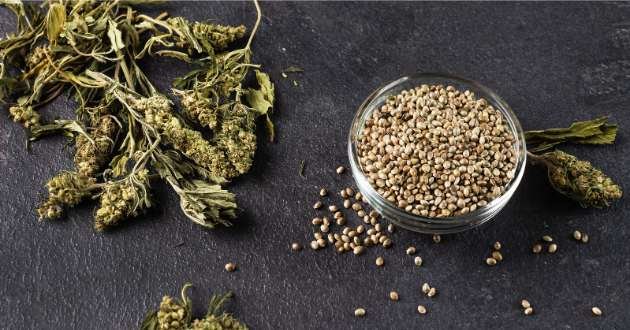
Light exposure also has a significant effect on cannabis seeds stored, leading to their degradation over time. Air quality too, is a vital factor, with substandard air conditions increasing the risk of contamination.
The genetic integrity of the seeds themselves can also dictate their longevity, with superior quality seeds, under optimal storage conditions, displaying viability for up to a decade. However, it is worth noting that germination rates may show a downward trend post the initial year.
How Cannabis Seeds Are Damaged in Storage
Cannabis seeds are damaged in storage through exposure to excessive moisture, leading to mold growth, extreme temperatures causing viability loss, and physical pressure resulting in shell cracking.
Cannabis seeds undergo a natural germination process, where moisture absorption leads to the seed swelling, increasing internal pressure until the seed coat cracks open for the radicle’s emergence. This event is crucial for the seed’s development into a seedling.
However, cannabis seeds can become damaged and their viability compromised through several means:
- Physical Damage: Rough handling, improper storage, or environmental stress can cause physical damage to seeds, leading to cracks or splits.
- Environmental Stress: Seeds may also suffer from environmental stress, such as fluctuating temperatures or humidity levels, causing the seed shell to crack or split prematurely.
- Age or Quality: The viability of older seeds or those of lower quality may be compromised due to weakened outer shells, making them more susceptible to splitting under suboptimal conditions. Not all splits in such seeds result in successful germination, as internal degradation over time or due to poor storage conditions may have occurred.
For seeds that split as part of the natural germination process, this indicates positive growth potential, provided they receive appropriate care. Conversely, seeds that split due to physical damage, environmental stress, or poor quality may not germinate or may lead to weak seedlings.
This highlights the importance of gentle handling and proper storage to maintain seed viability.
Conclusion
In conclusion, the proper storage of cannabis seeds requires a clear understanding of their basic properties, the role of humidity, optimal storage conditions, and container types.
Location plays a significant part in maintaining seed viability, while various factors influence storage duration.
By sticking to these guidelines, the longevity and germination success of your cannabis seeds can be significantly enhanced, ensuring their value for future cultivation.

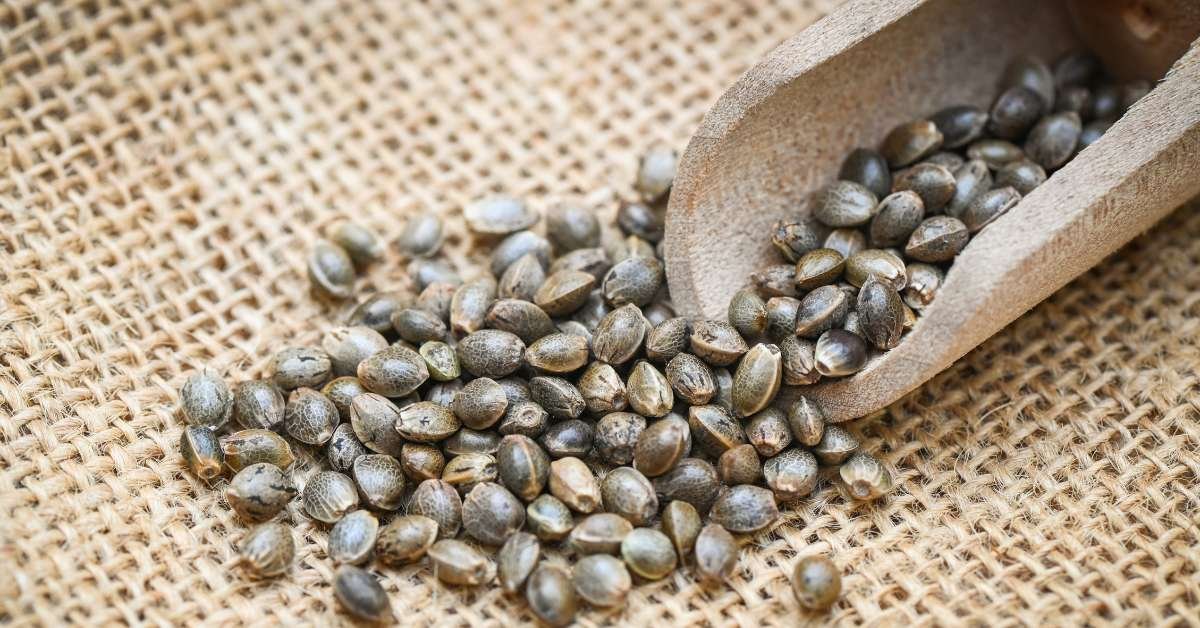
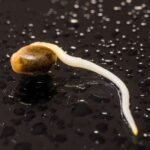

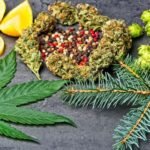
Leave a Reply
You must be logged in to post a comment.